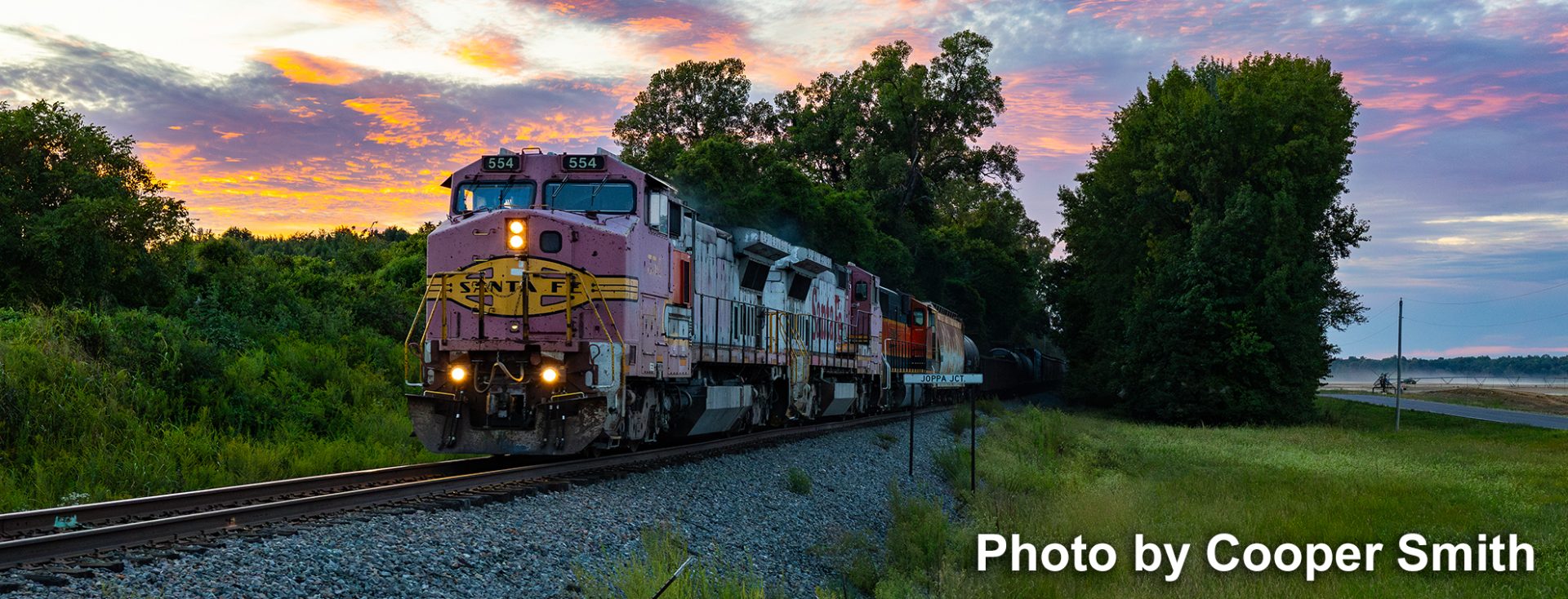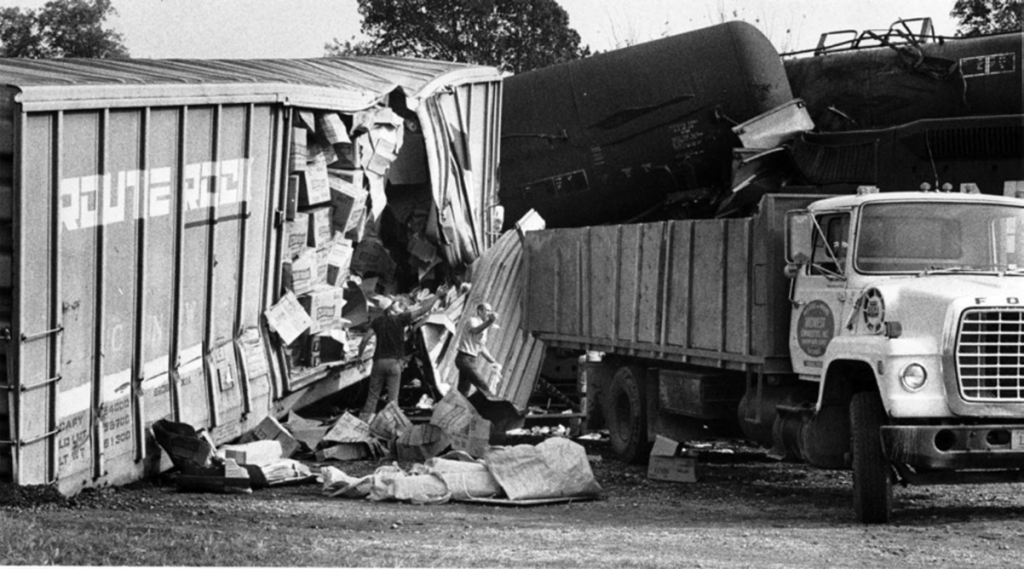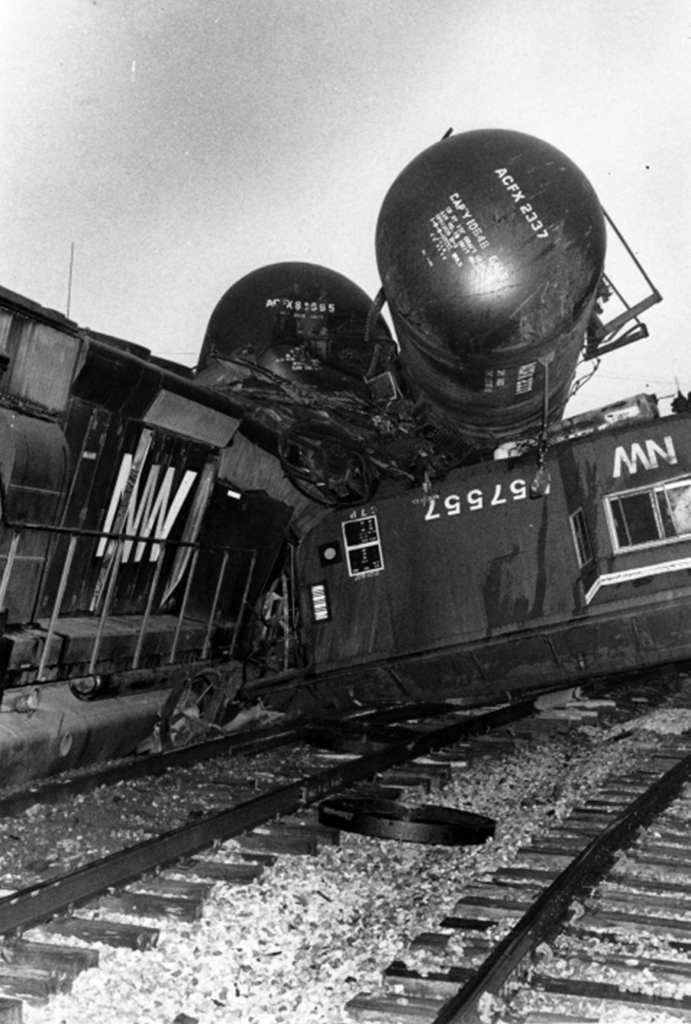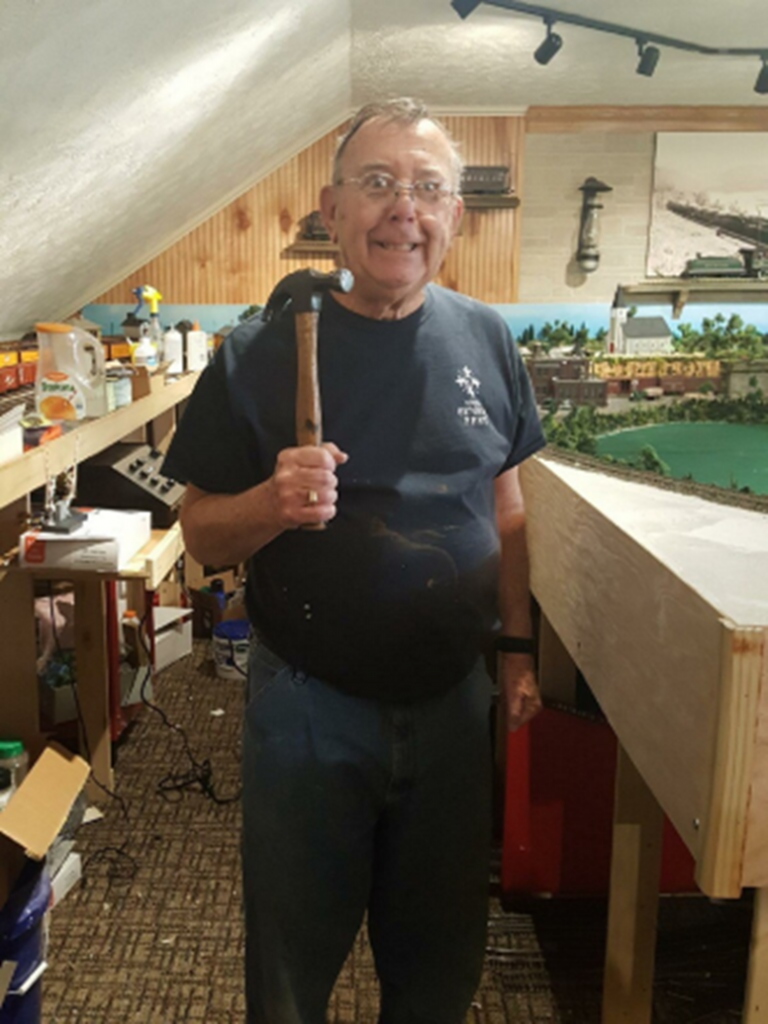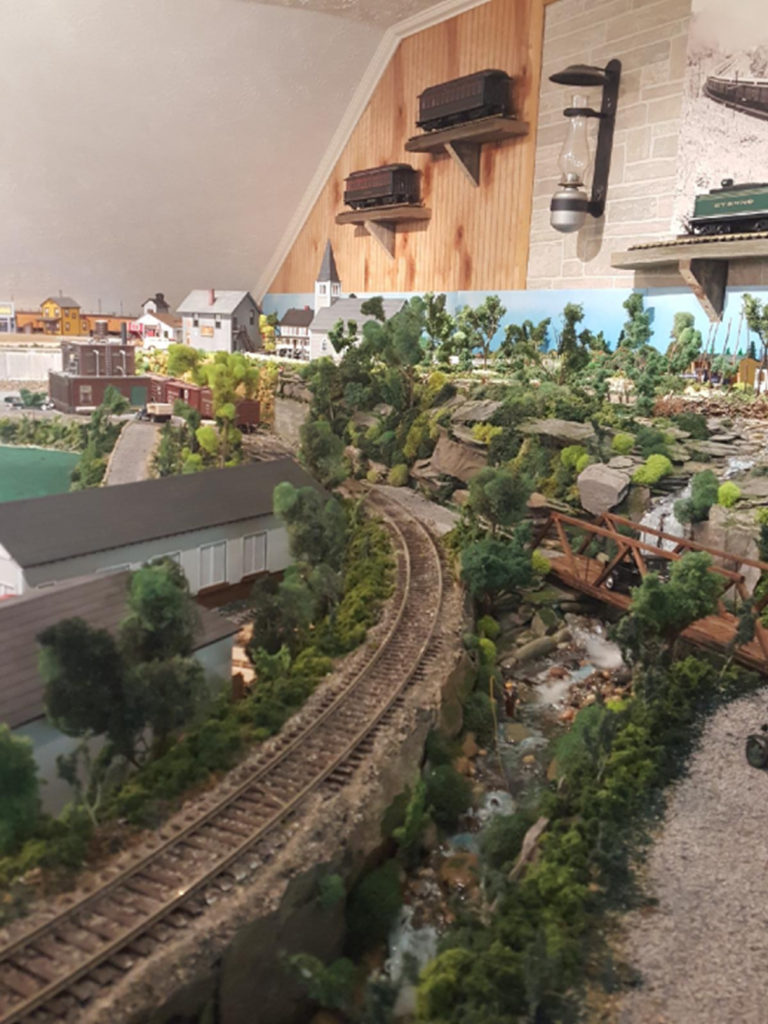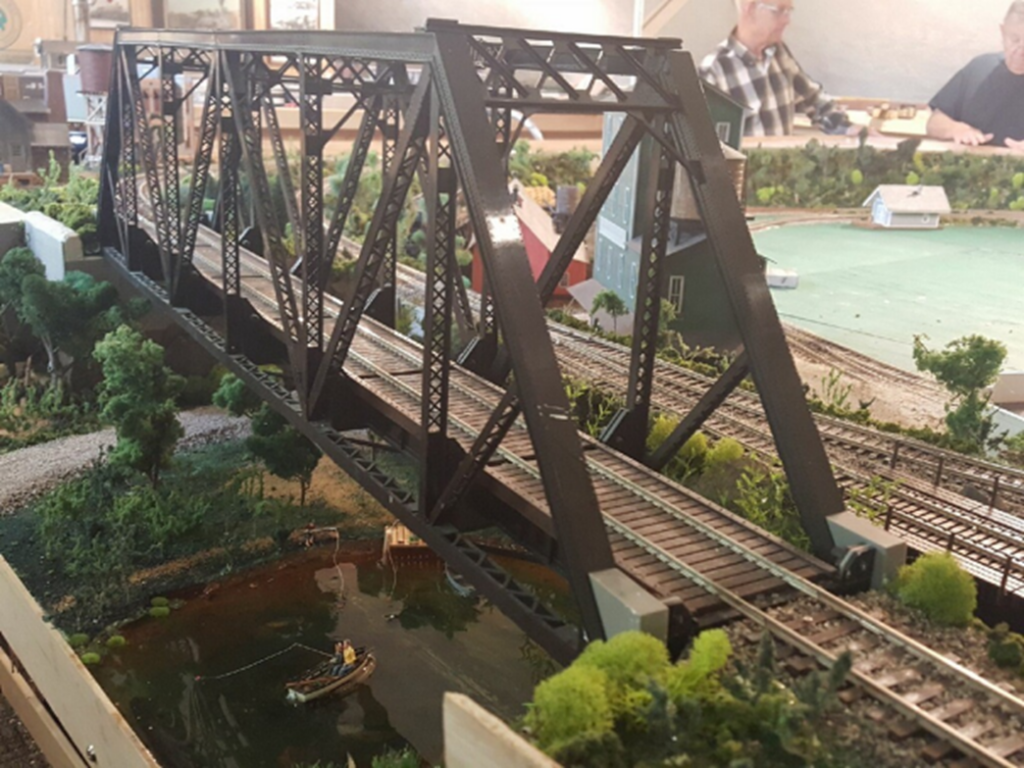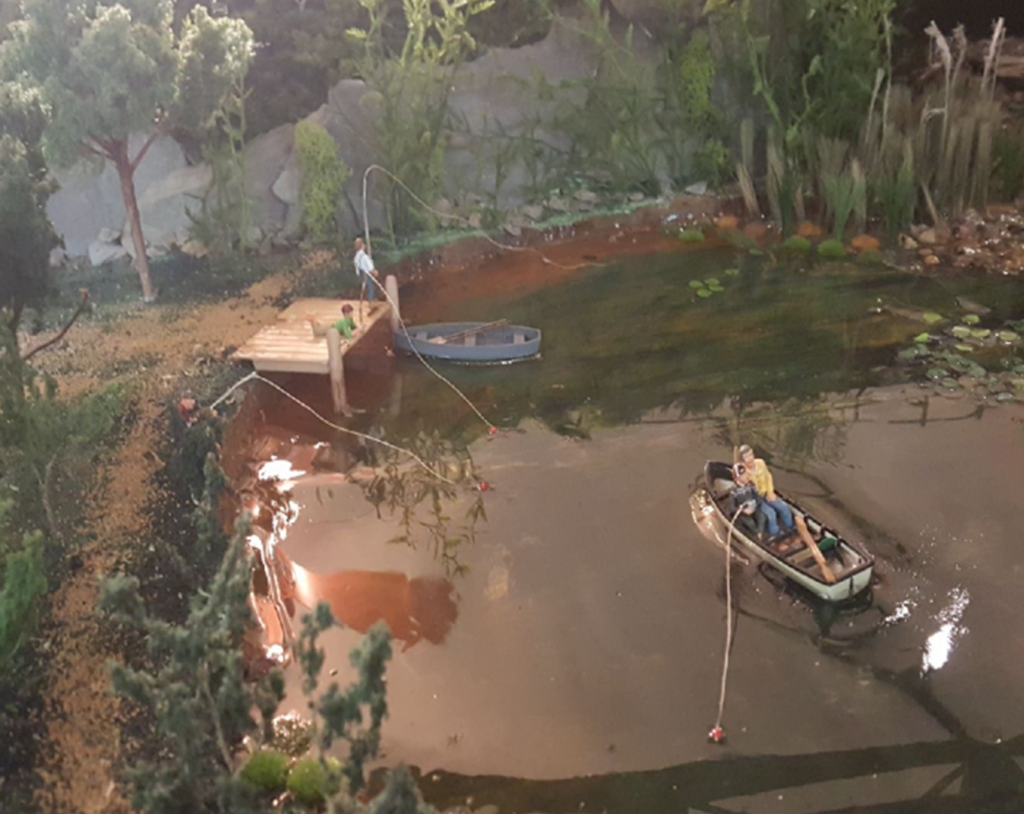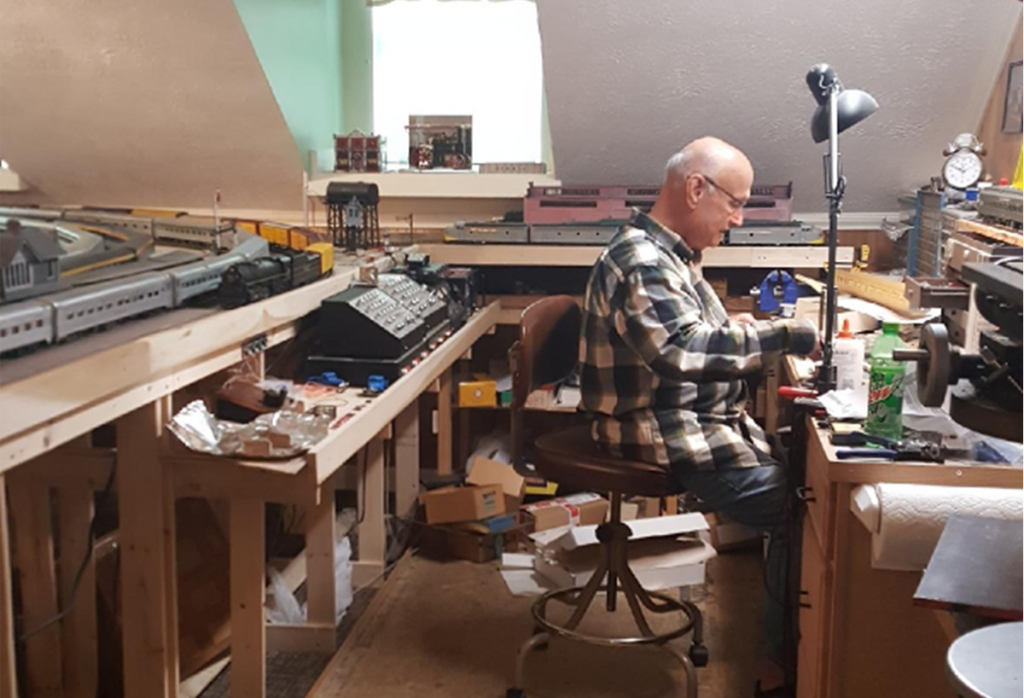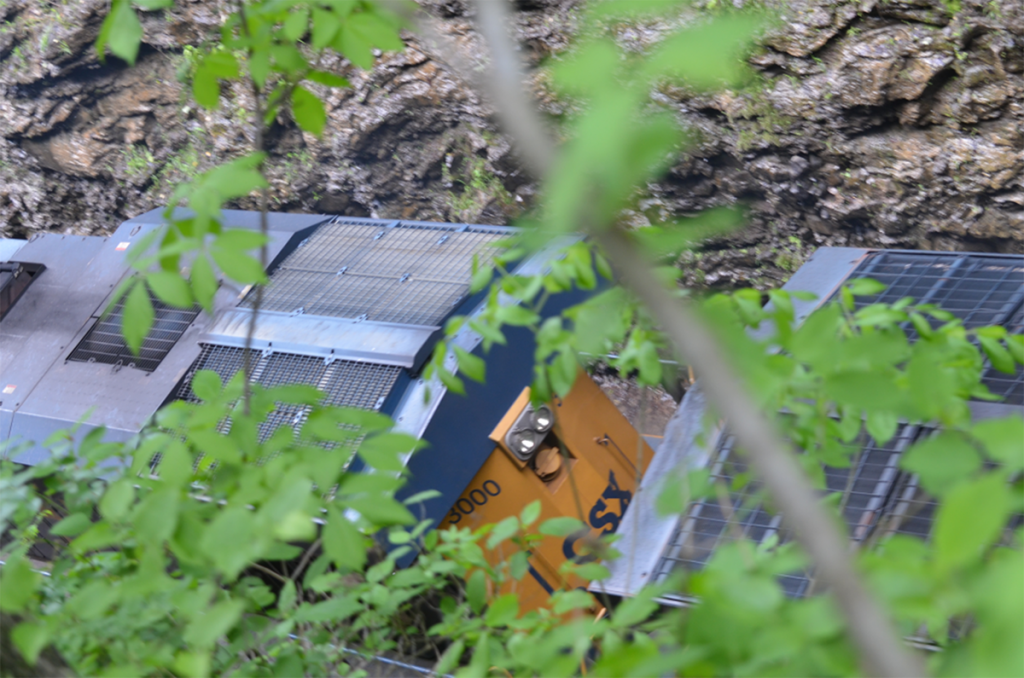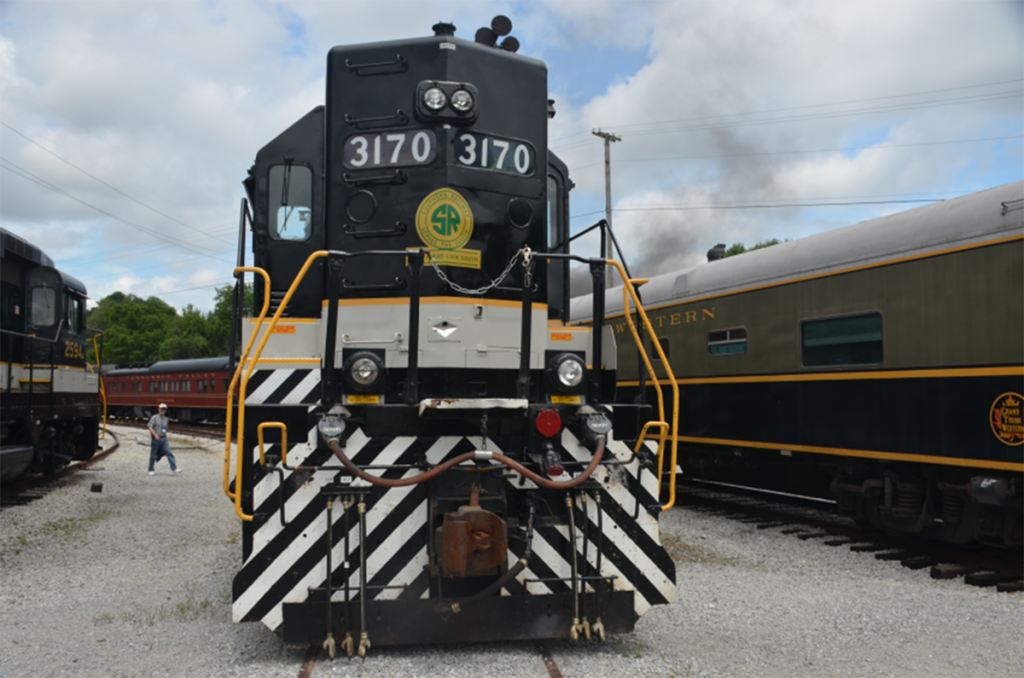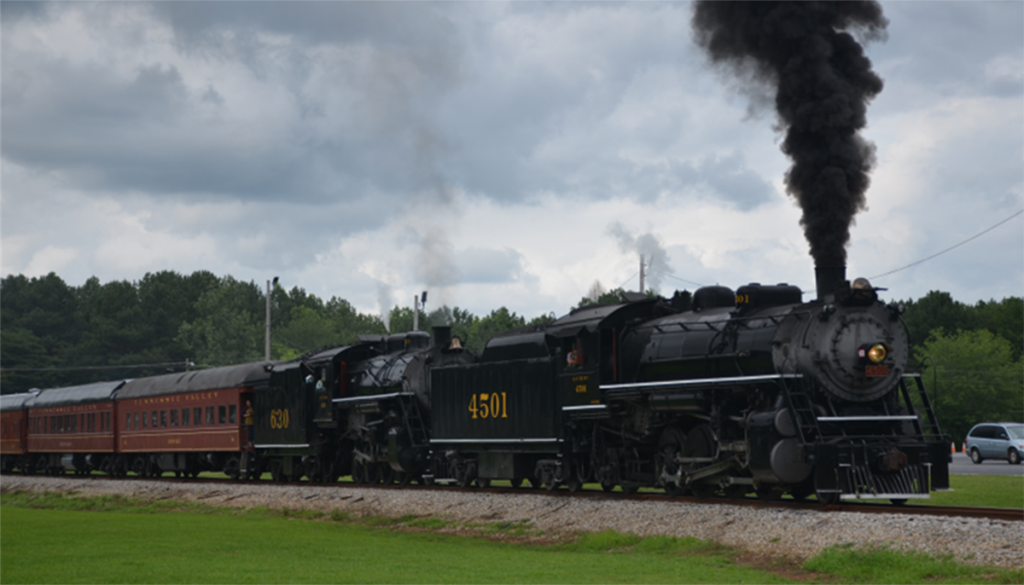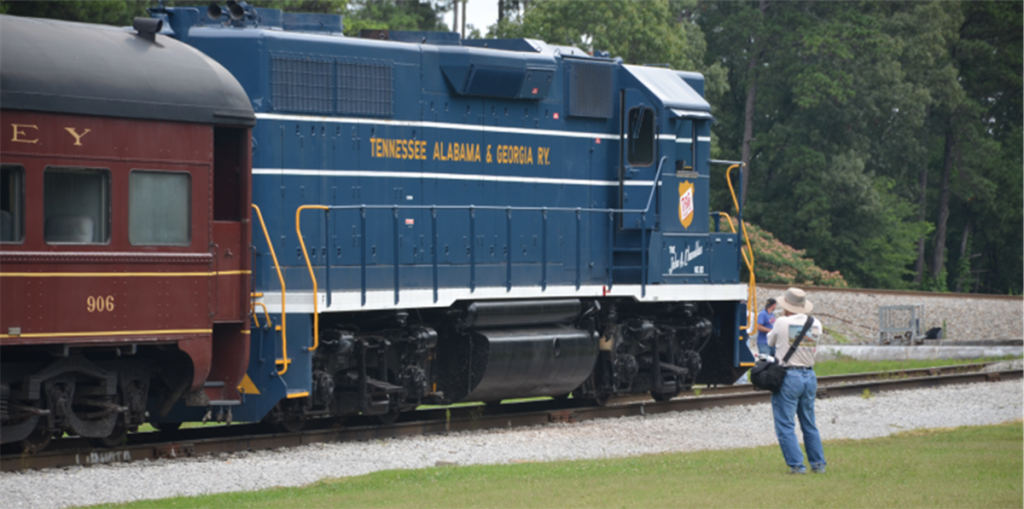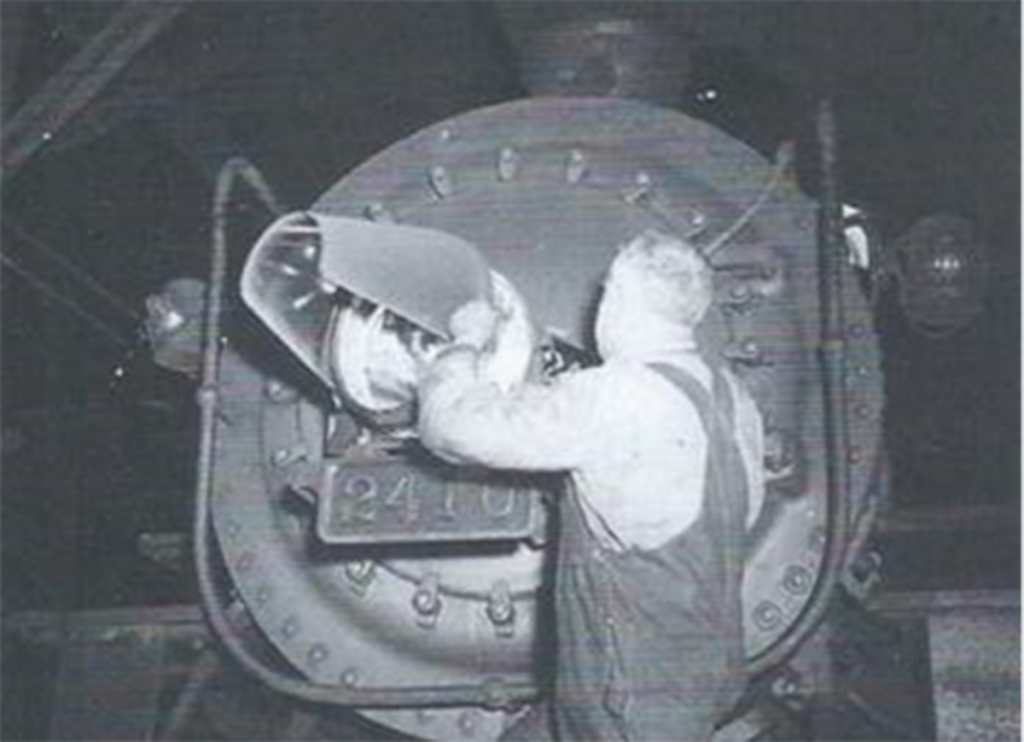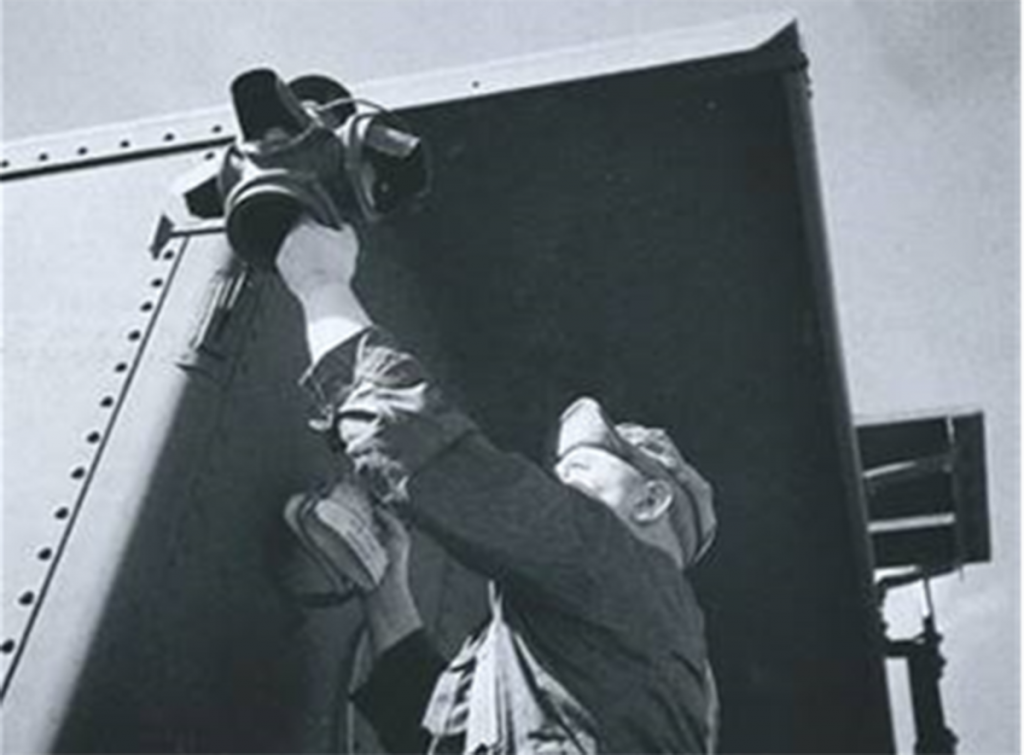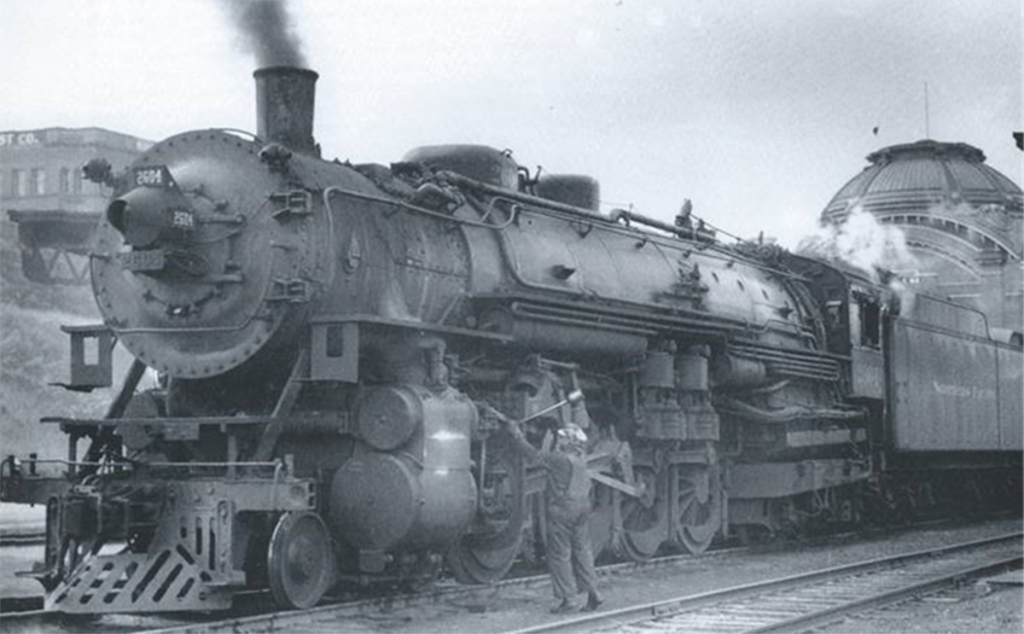Featured Modeler – Will Kling
I have Been N scale since 1971. The farm in the pictures is a non-railroad enterprise. I just thought it would be nice to have something that did not just have to be rail served.
I do plan on putting a foundation under the yellow building the farmhouse and put out the clothes lines and the other figures that I hand-painted. Also seen here are steel mill ingots I have just started to weather.
This layout covers 26 x 16 feet. When done I will have the L& N EK sub on the upper level and the SP / UP Chester sub on the lower level. The Red River Viaduct is 5 feet long. Click on picture for larger view!
Kato HO Code 83 UniTrack for sale – bundle includes straight and curved track sections: 10 2-105; 2 2-111; 28 2-120; 20 2-130; 56 2-150; 4 2-170; 16 2-210; 16 2-220; 4 2-260; 12 2-270. No. #4 turnouts: 5 2-840; 5 2-841. 10 Turnout remote switch machines and controllers, 2 bumpers, transformer/controller, and a pack of insulated joiners. Email billtrainthomas@gmail.com or text 270-339-9482 for more info. 750.00.
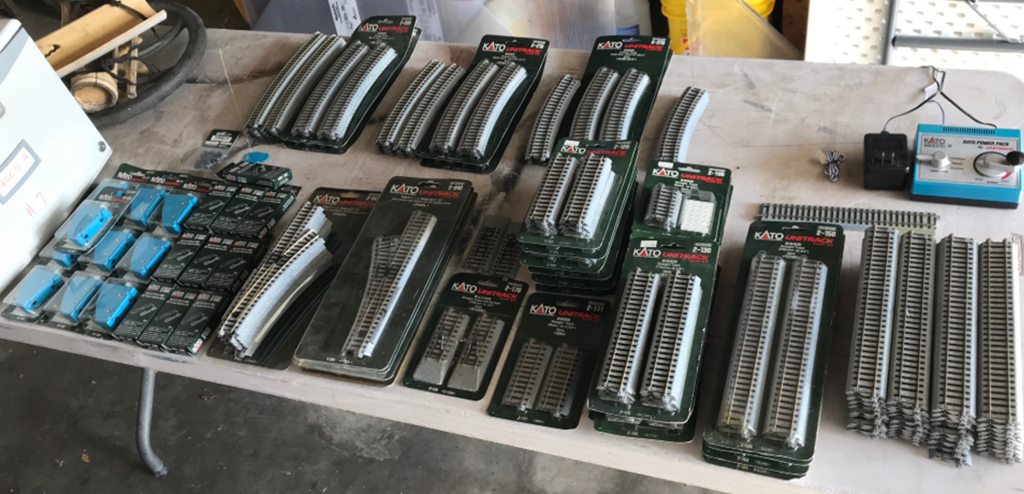
Congratulations to the winners of our Chapter’s May 2020 photo contest! We had a total of 6 entries this month and congratulations to Bill, Cooper and Ricky for their winning entries! Our next contest will run from July 15-31 with a submission deadline of August 7th of not more than two entries per chapter member!
The May winners are are:
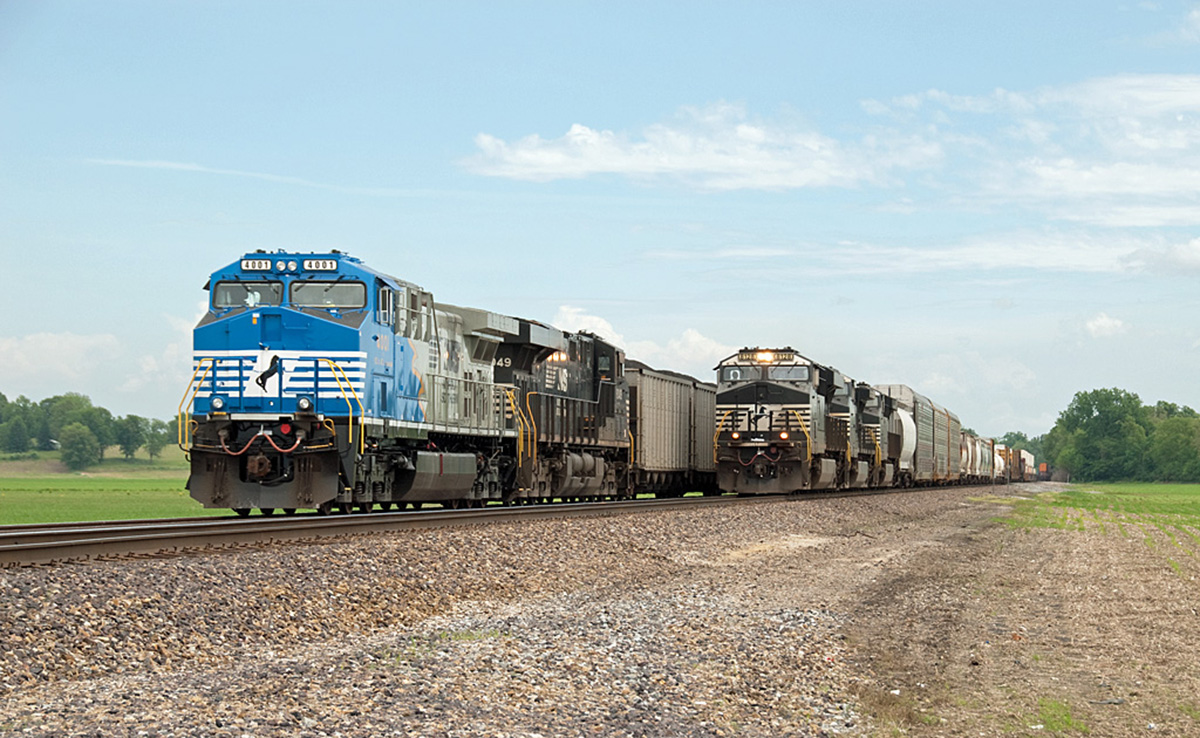
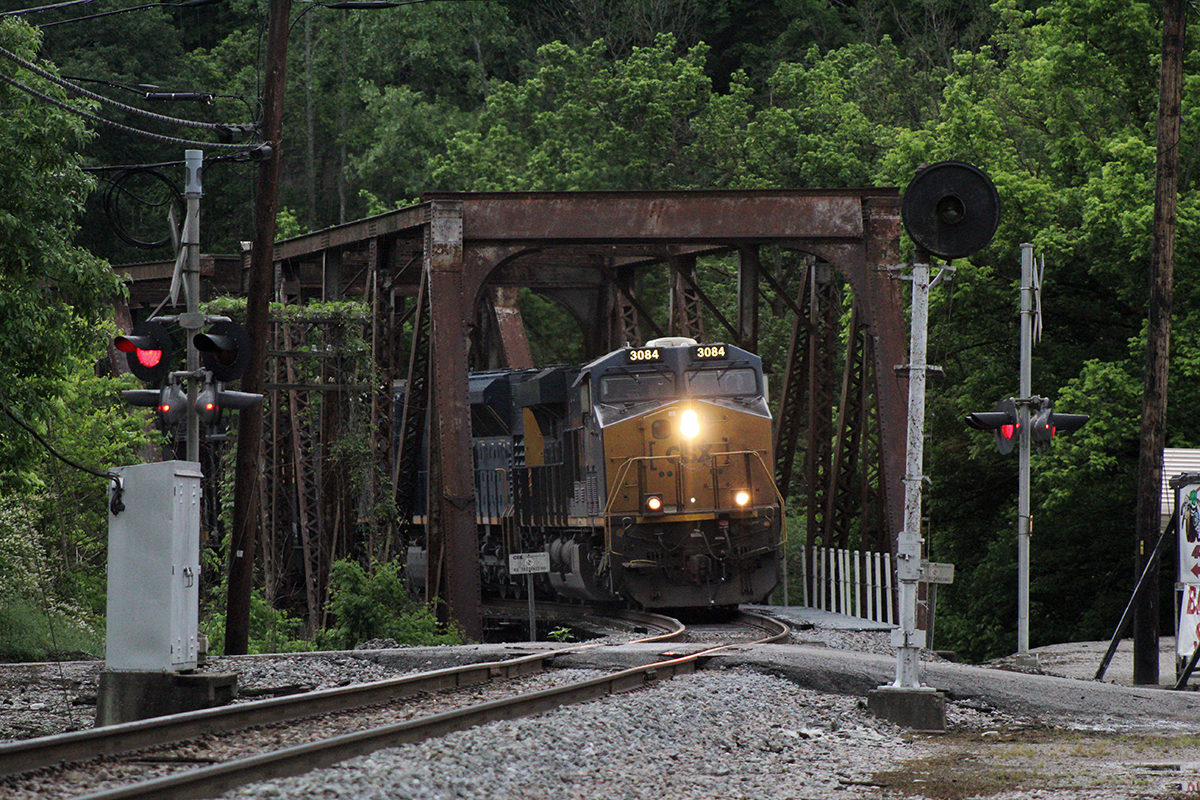
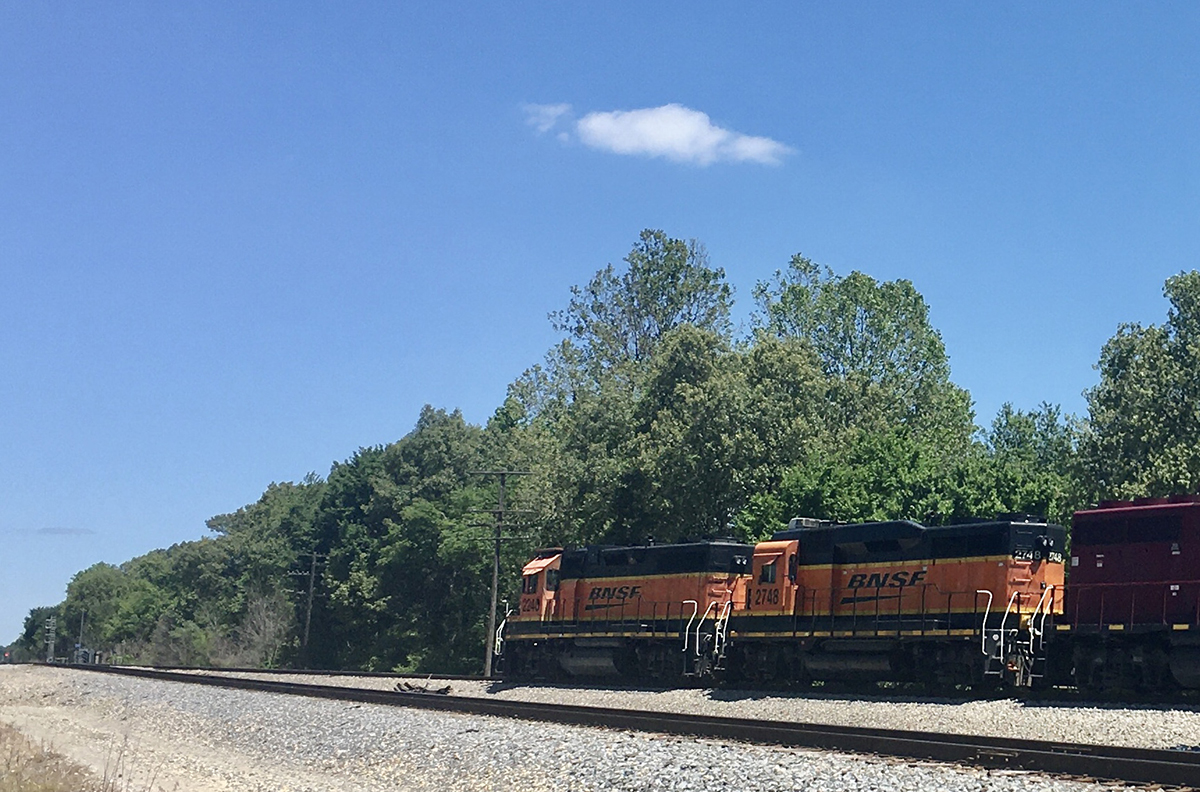
The other entries were…
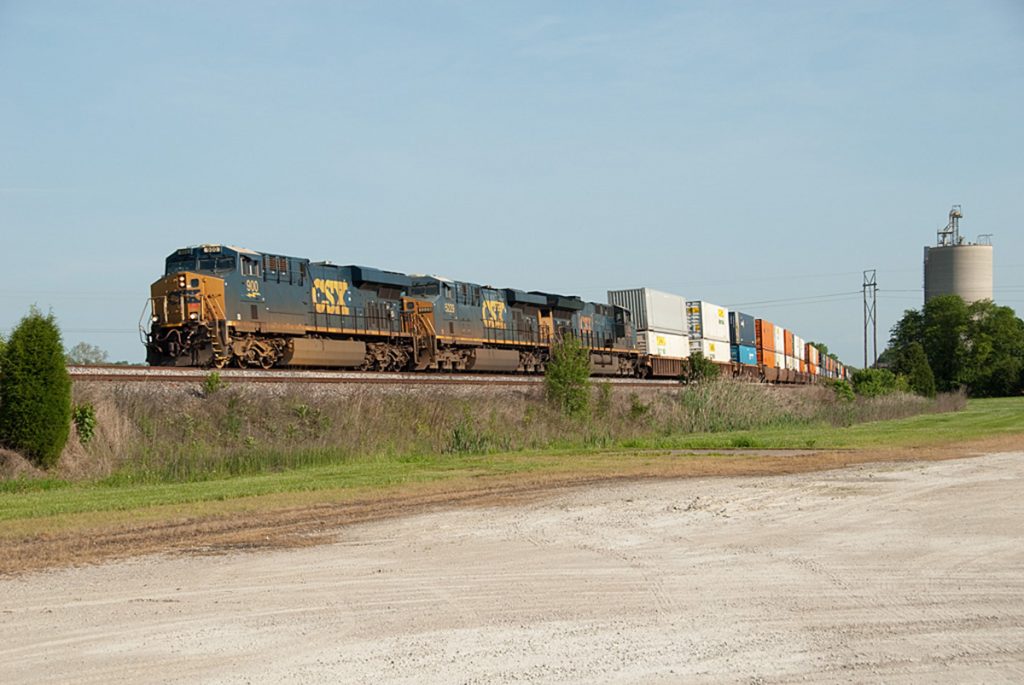
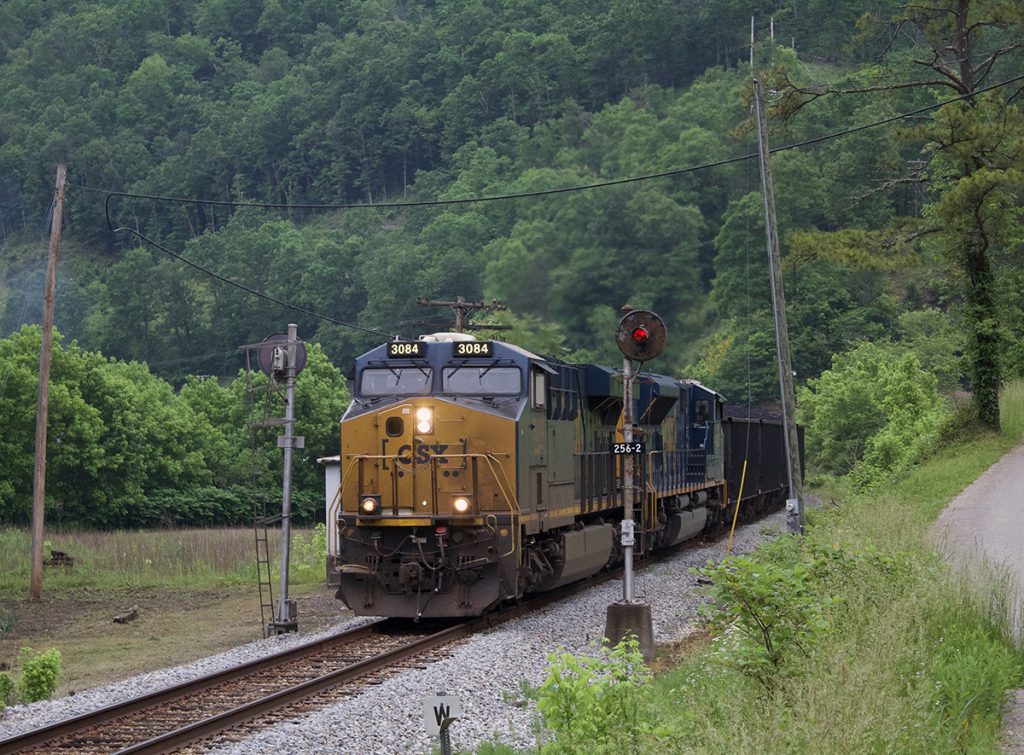
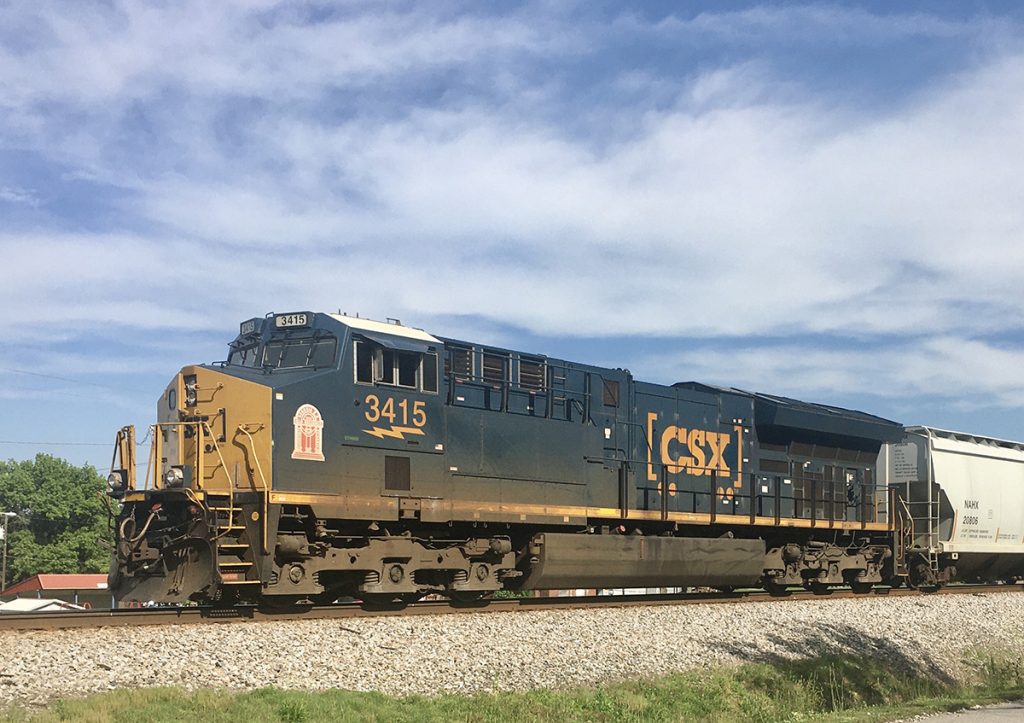
Our March 2020 chapter photo contest ran from April 15-30th and we had a total of 10 entries from 5 chapter members. The winning entries are below and the other entries are below them. Congratulations to our winners and we hope that everyone will participate in our May contest that runs from May 15-31st. If we are still in the pandemic please observe social distancing! Submission deadline is June 7th and we need a caption with each entry! – Jim Pearson
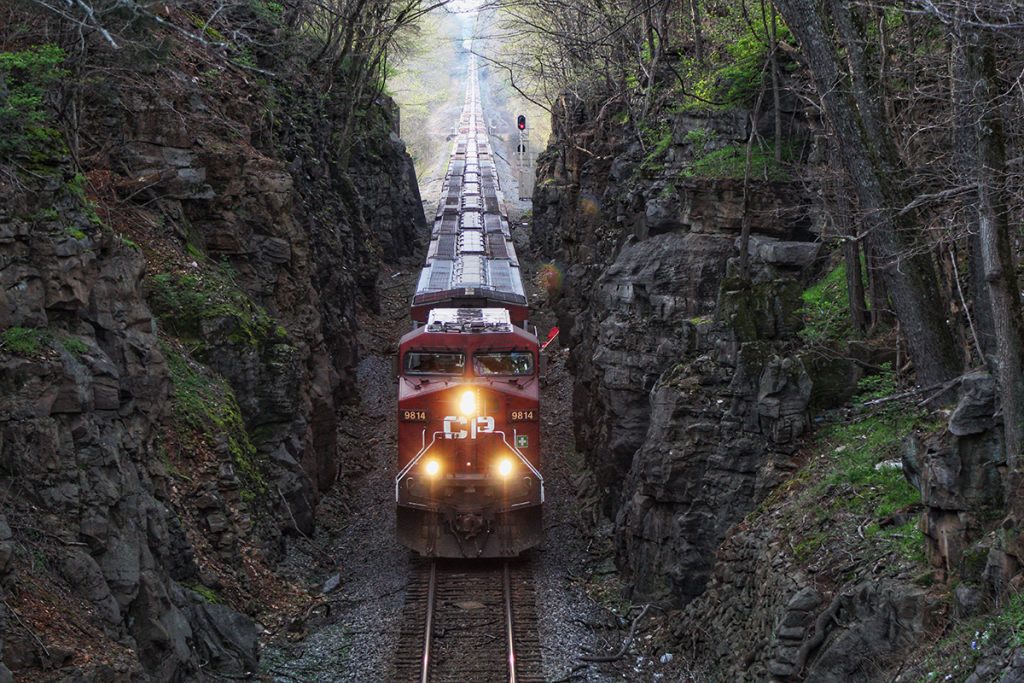
First Place March 2020 by Cooper Smith – Canadian Pacific 9814 leads K815 southbound through the Red River cut just north of Adams, Tennessee on the Henderson Subdivision as the conductor holds a flag out his window as they pass under the hwy 41 overpass. 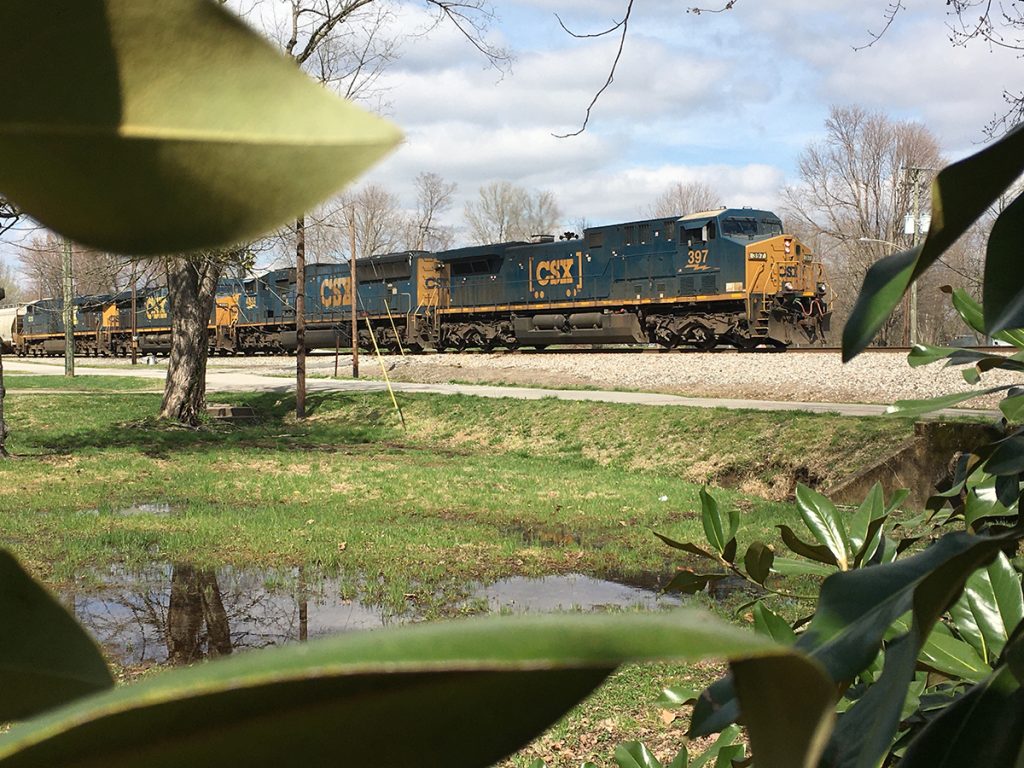
Second Place March 2020 by Ricky Bivins – CSXT 397 leads a mixed freight at Mortons Gap KY as it heads south on the Henderson Subdivision on March 25, 2020. 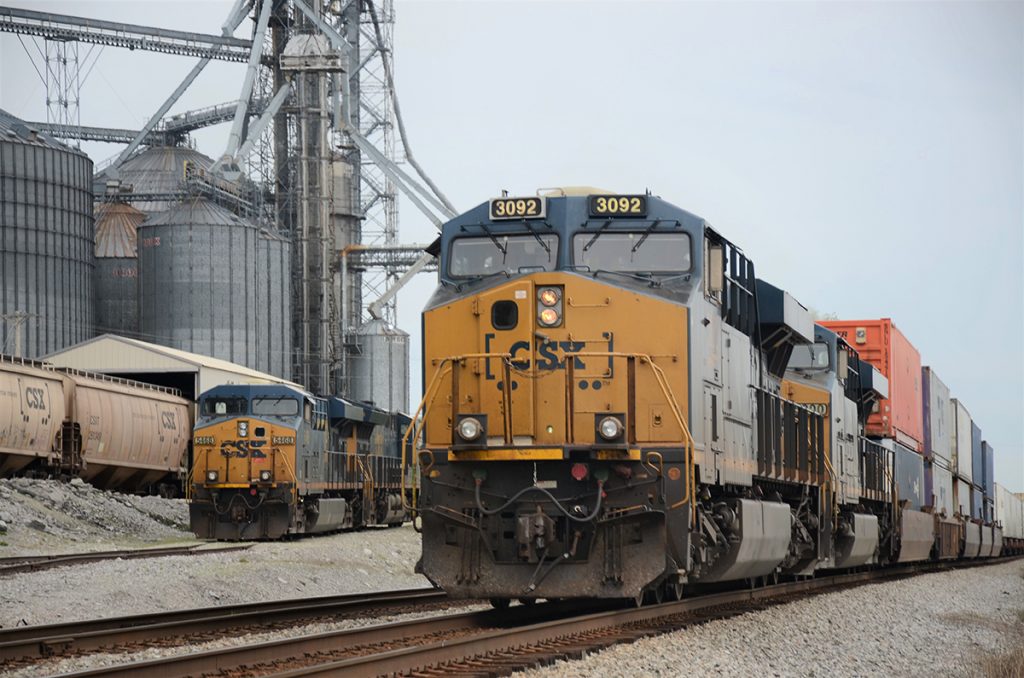
Third Place March 2020 – CSXT #3092 on the lead followed by #5320 pulling a northbound intermodal out of Pembroke Yard. On a siding sits CSX locomotive #5468 waiting for its CSX grain train to be unloaded at Siemer Milling Company on March 30, 2020.
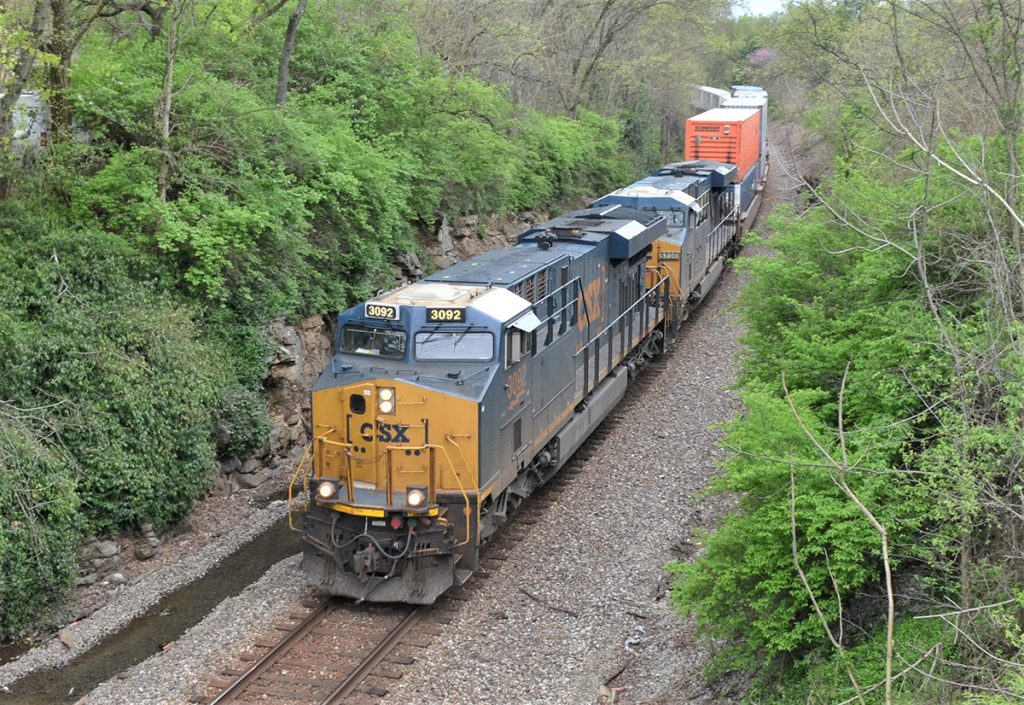
CSX locomotive #3092 on the lead followed by #5320 pulling a northbound intermodal. The lead locomotive is just about ready to pass under the Walnut Street overpass, Hopkinsville, Kentucky on March 30, 2020 on the Henderson Subdivision. – Photo by William Farrell 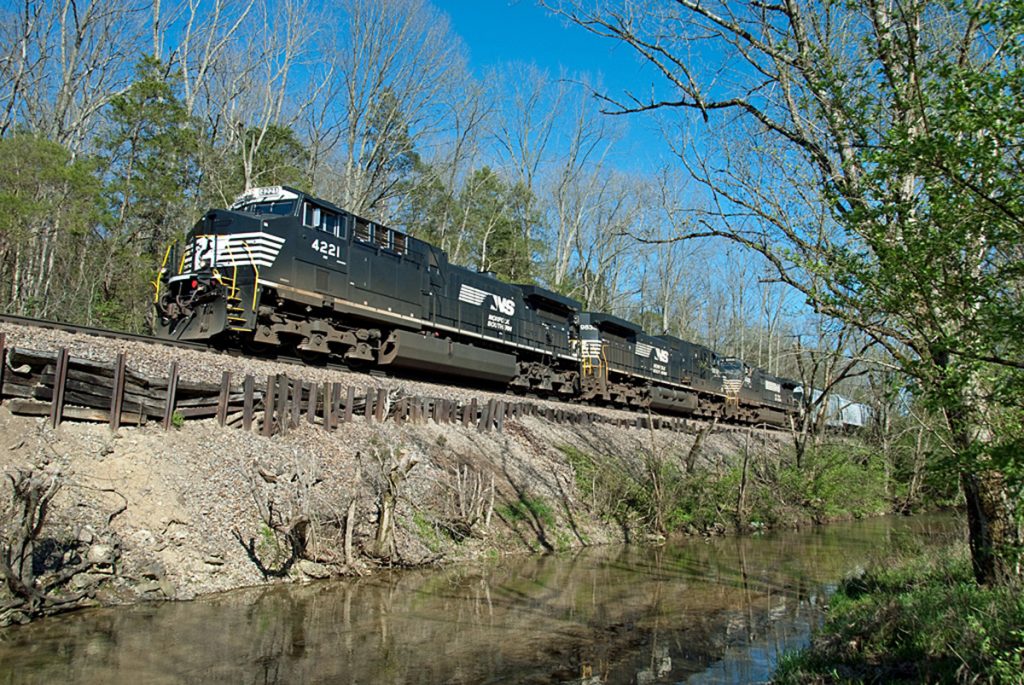
Norfolk Southern #375 skirts along Brush Creek with a mixed freight near Louisville, Ky on March 29, 2020. – Photo by Bill Grady 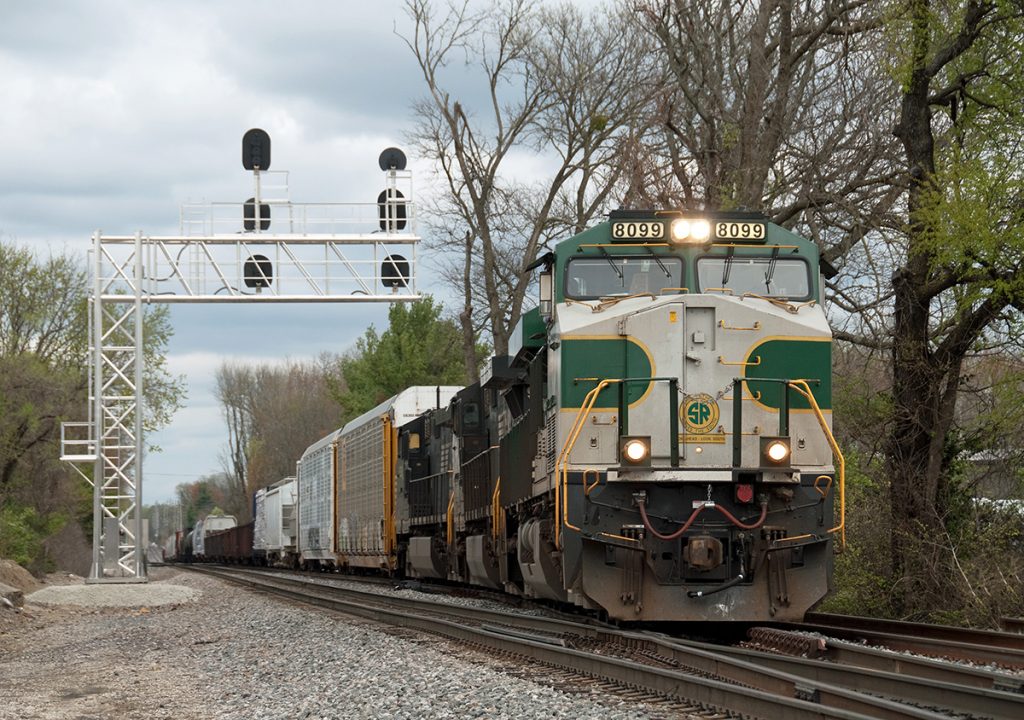
Norfolk Southern #375 with Southern Heritage Unit #8099 pulls through the crossovers at Buechel, KY on March 31, 2020. – Photo by Bill Grady 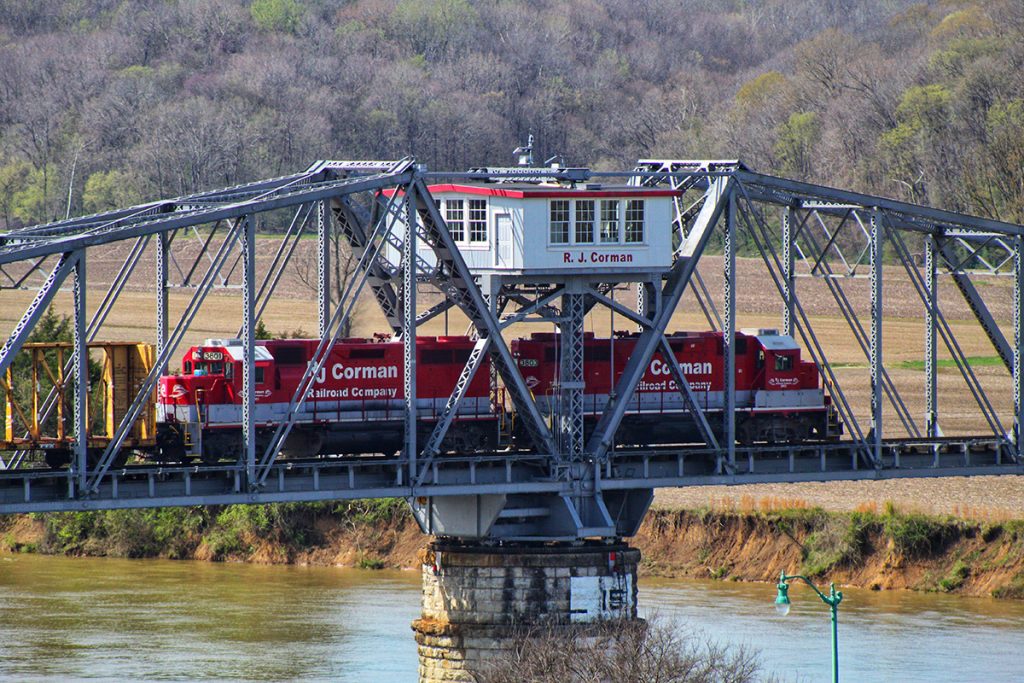
RJ. Corman 3803 leads the Cumberland City turn southbound over the Cumberland River bridge in Clarksville, Tennessee. – Photo by Cooper Smith 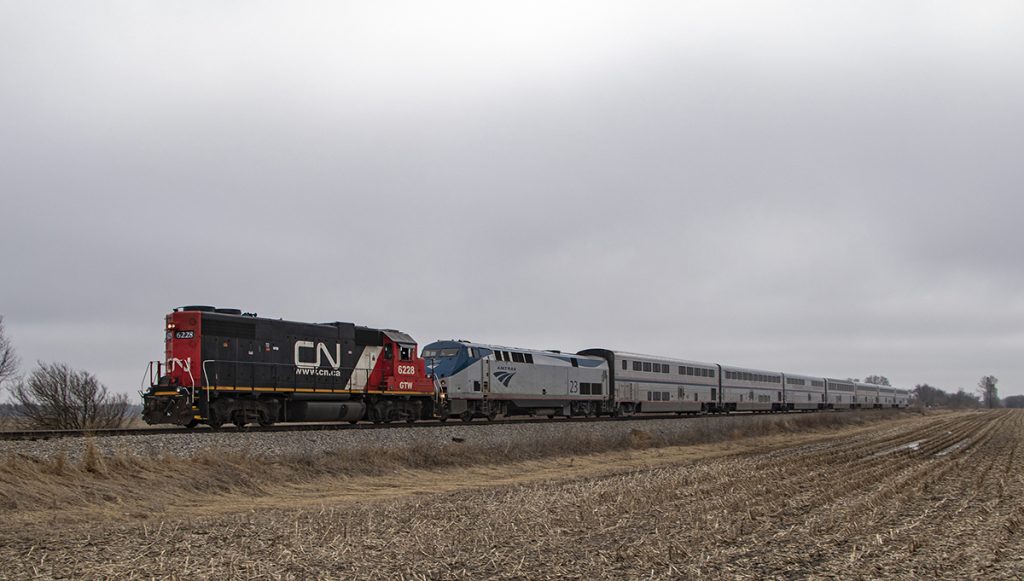
Put Me In, Coach! – CN/GTW GP38-2 #6228 is found hustling a very late (appx. 8hrs) northbound City of New Orleans after just completing their station stop a few miles south in Champaign, IL. The ex-DT&I veteran is running long hood forward after being added to the train earlier in long distance journey due to mechanical issues with the aged P42DC locomotive. – Photo by Matt Gentry 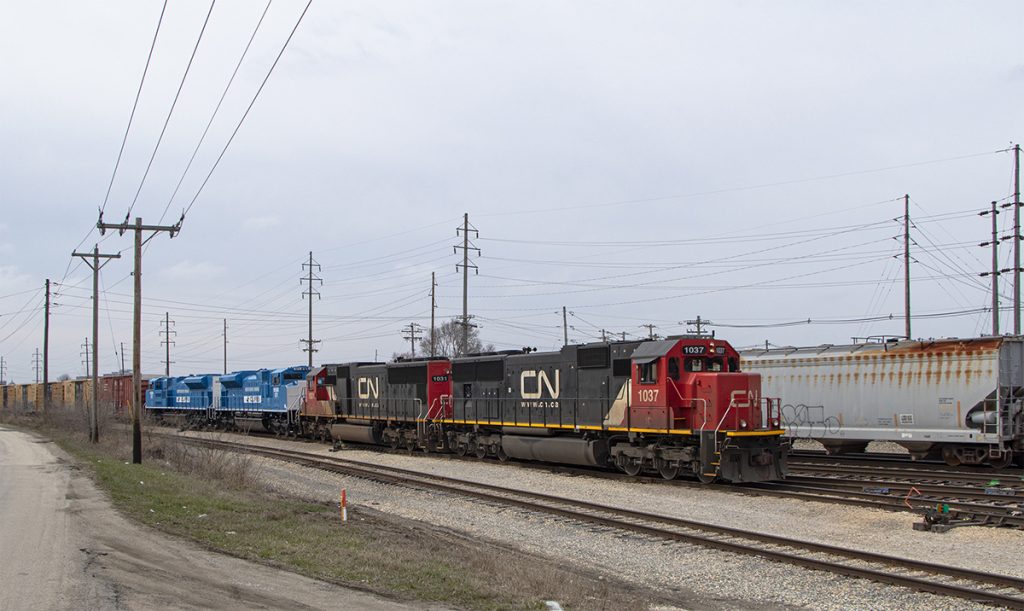
Special Delivery – Canadian National SD70s 1037 and 1031 snake their way into south Champaign yard to do more work before continuing on their way north. Seen behind the veteran SD70s are 2 recently repainted (verdict is still out on if they were completely overhauled or just repainted) SD70ACe locomotives headed for North Shore Mining. The units are ex-PRLX, ex-CSX SD70ACe units 4833 and 4839. – Photo by Matt Gentry 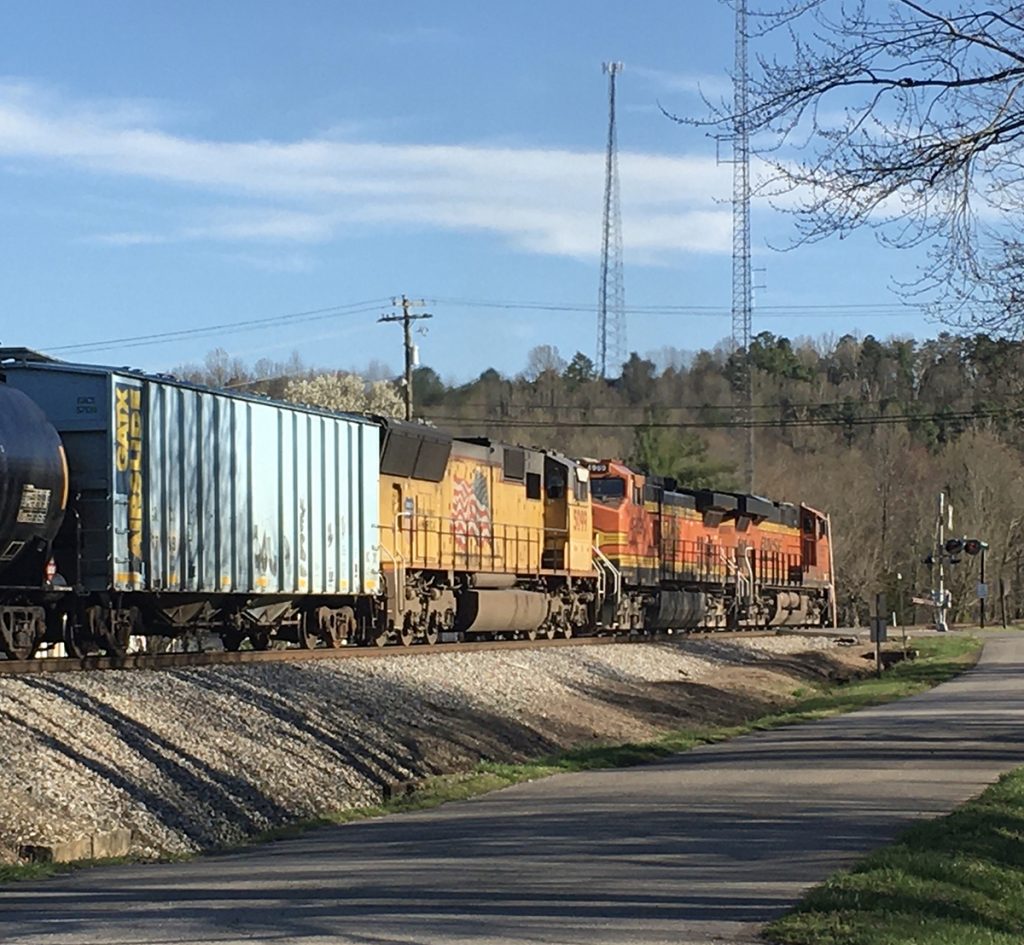
Two BNSF and a UP locomotive leads a southbound freight at Mortons Gap, Kentucky on the Henderson Subdivision on March 25, 2020. – Photo by Ricky Bivins
The first photo I shot from a tree at the north portal of Ridge Top Tunnel, Ridge Top, TN. It was more like hanging from a tree as the CSX locomotive passed underneath me. I no longer advocate taking pictures from trees.
Photo by William Farrell, 2018. (Editor’s note: I thought this was just a lot of super-elevation!)
The other three photos were shot at the Tennessee Valley Railroad Museum back in 2017. – Photos by William Farrell
Submitted by Gary Ostlund – After Pearl Harbor and the start of World War II, the railroads quickly took measures to protect themselves. Note the hoods over the locomotive headlight and marker lights. Even the small classification lights on the locomotive’s smokebox are hooded.
Not long after the December 7th attack the Japanese gained a foothold far out on the Aleutian Islands. With the threat of further air attacks railroads took these precautions along with shielded fireboxes, and blackened windows on passenger equipment.
On the civilian side, city street lights and windows were darkened. American and Canadian military forces building the ALCAN Highway deliberately built curves in the road to hinder the ability of enemy aircraft strafing convoys. Some of those curves were still visible in 1973.
Credits: NP 2604 at Tacoma – Jim Fredrickson, SP 2470 headlight – Jack Delano, Caboose marker light – Southern Pacific Lines.
I caught this CSX unit coal train at Warrior Coal’s loading facility west of Madisonville, February 3, 2020. I was coming off a school bus route (empty) on the west side of the county. Thus the limited angle and distance from the train. Get coal train pictures while you can! – Photos by Bill Thomas
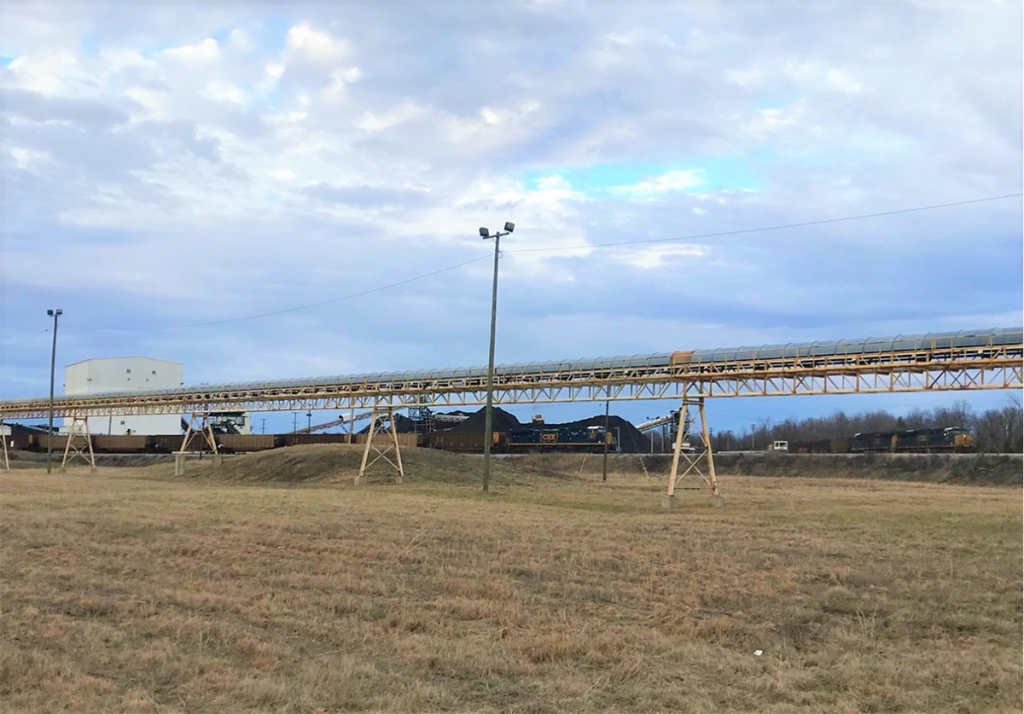
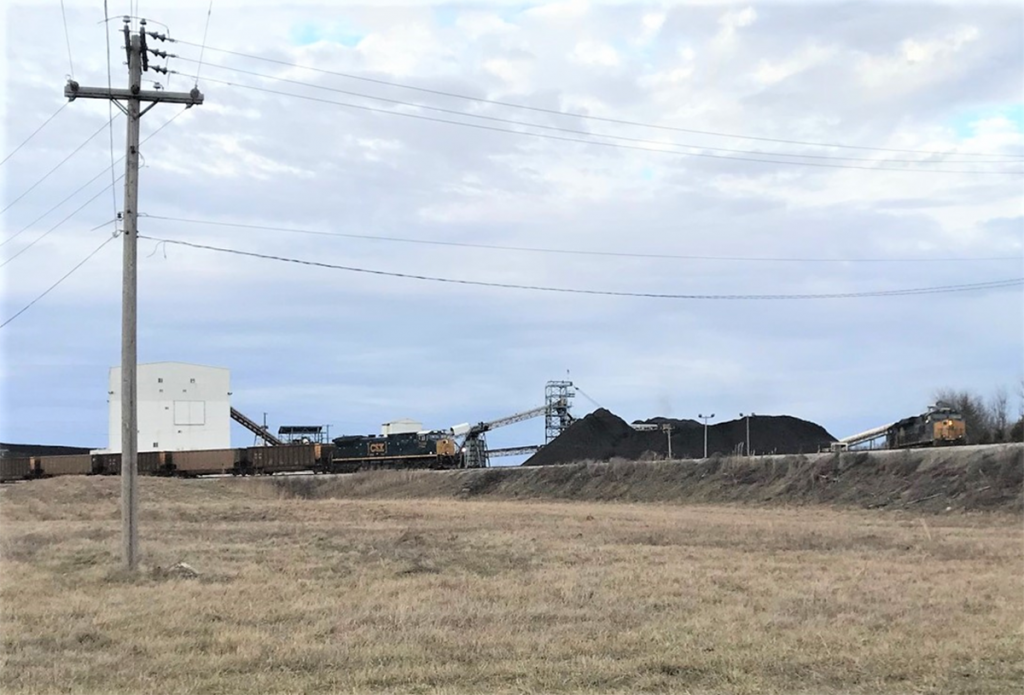

The Hook Line & Singer Garden RR got some needed track work after a long period of deferred maintenance due to budget cuts! Tie replacement was a priority for the short line. – Bill Thomas
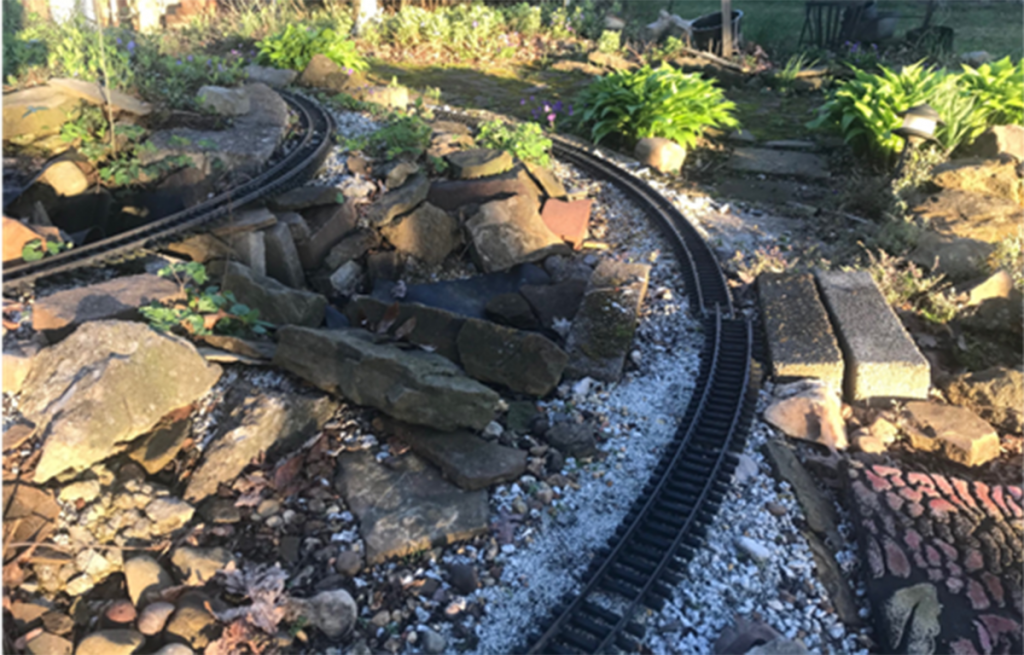
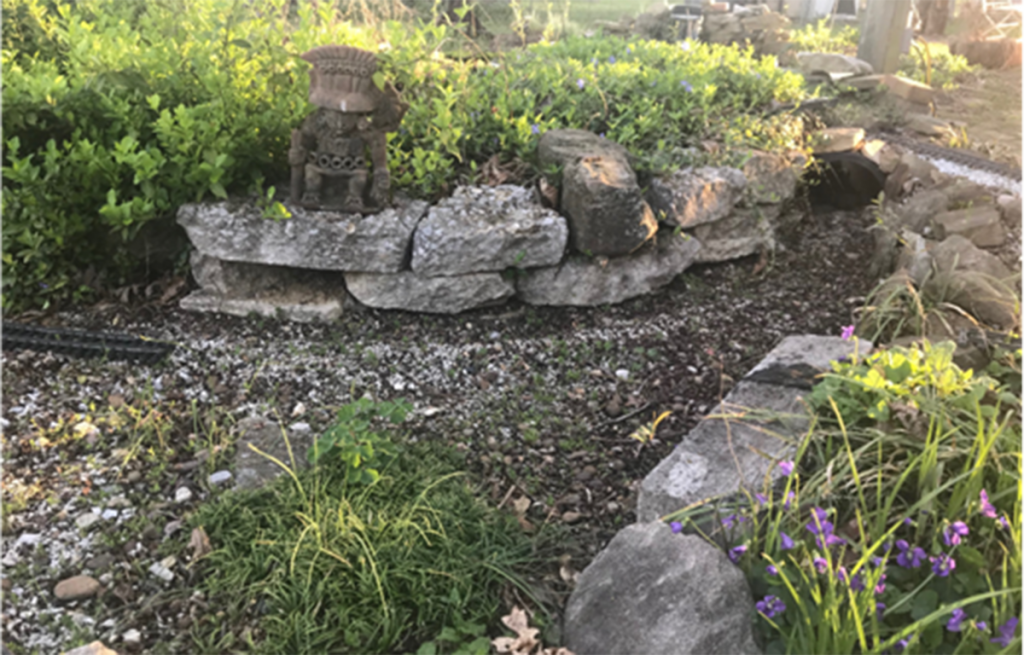
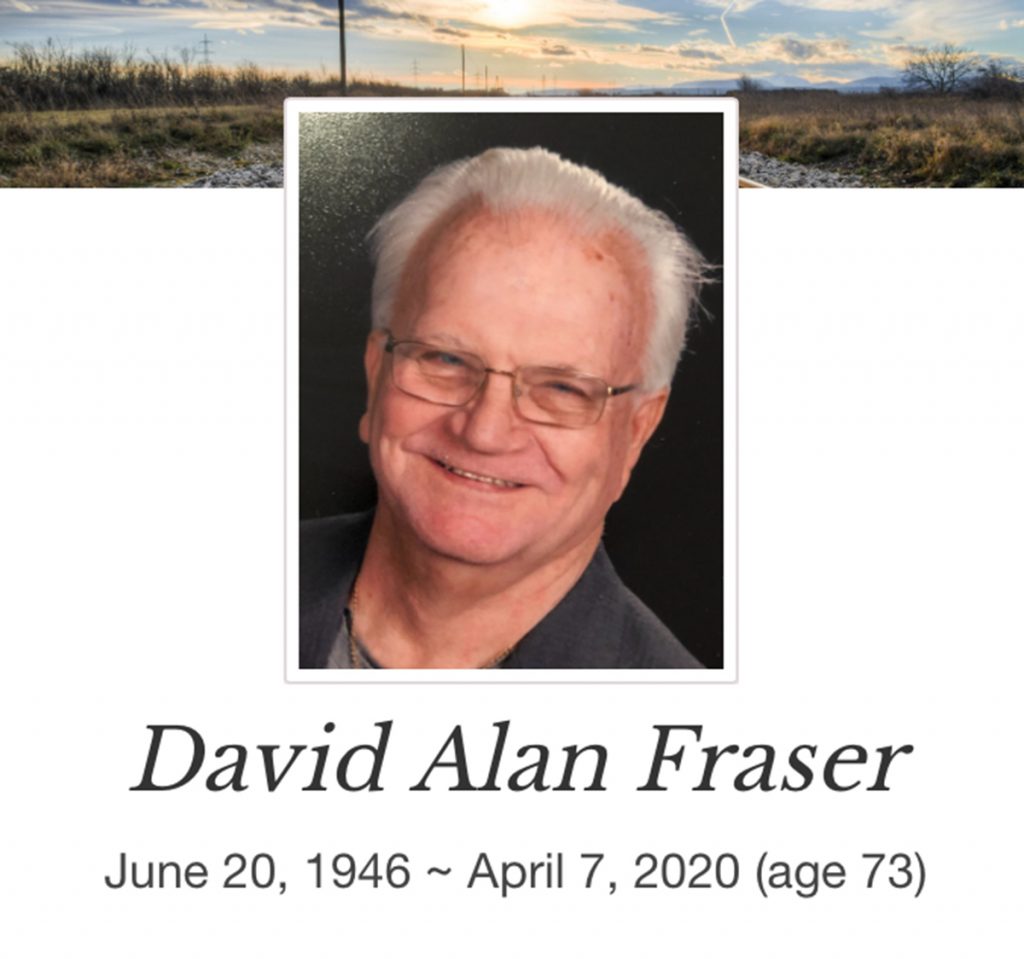
Obituary
David Alan Fraser, 73 of Clay, KY passed away Tuesday, April 7, 2020 at Baptist Health in Madisonville.
David was born in Earlington on June 20, 1946 to the late Emory and Reba Fraser.
He worked at York International where he was an industrial mechanic.
He was a member of the Redeeming Love General Baptist Church in Clay and also a member of Webster County Historical Society, West Kentucky Chapter of the National Railway Historical Society, Civic Club in Earlington and the Earlington Volunteer Fire Department.
Survivors include his wife of 24 years Gayle, 1 son Sean O’Brien (Lisa) of Madisonville, 1 brother John Fraser of Earlington 2 granddaughters Avery and Abigail O’Brien, 1 niece Melanie Fraser and great-niece Avoe Fraser.
Private funeral services will be held. Burial will be in Fraser-Blackwell Cemetery
Memorial contributions can be made to Fraser-Blackwell Cemetery, c/o Ryan Hammack, 93 Old Clifty Road, Clay, KY 42404.
Online condolences can be made at https://www.vanoverfuneralhome.com/obituary/David-Fraser
Our monthly meeting tonight, March 16, 2020, of the West Kentucky Chapter of the NRHS has been canceled due to the station being closed to help combat the spread of the Corona Virus. Please pass the word to other chapter members you know. As of now we will meet next month on April 20th.

A week ago (preceding page), I stumbled portraying the closeness of the Milwaukee Road to the Northern Pacific Railway trackage. The two pictures here are the same location as last week’s Northern Pacific eastbound North Coast Limited, just nosing under the bridge. In both pictures above, the Milwaukee freights are westbound. The tunnel where #22 is exiting is about two car lengths behind the four diesels. If you were to Google-Earth this location you would see the valley is quite constricted here. The river is flowing away from the photographer.
The four diesels are crossing the Yakima River, but will only remain on that side for about a mile. The Milwaukee line continues up the Yakima River Valley, ducks into a short tunnel, follows the shoreline of Lake Keechelus, enters two snow sheds before the 11,789-foot Snoqualmie Pass tunnel. Both railroads enjoy relatively level travel up the valley, the Milwaukee all the way to the long tunnel. Northern Pacific trackage climbs a 2.2 percent grade from just behind the cameraman for about six miles to their Stampede Pass Tunnel.

The NP and Milwaukee do chase each other at various locations in the states of Washington and Montana. They are within sight of each other from the scene in these pictures, Lake Easton to Ellensburg, most of 40 miles. In western Montana for many miles along the Clarks Fork River they are much like double-track in some places, and zip in and out-of-sight for about a hundred miles. They share sides of the Yellowstone River in eastern Montana for about 85 miles.
Picture credits: diesels on bridge by Robert W. Johnston; #22 at tunnel by Dale Sanders

Pride of the Northern Pacific Railway, the eastbound vista-domed North Coast Limited, Train # 26 is drifting down the Yakima River Valley near Easton, Washington. This 1962 shot was taken from an open vestibule by the late great photographer Jim Fredrickson. The nose of the leading unit is under the Milwaukee’s line crossing to the other side of the river. In less than a mile it will bridge back to this side of the river.
The NCL left Seattle at 2:45 PM and has tunneled under Stampede Pass and descended into the scenic valley. It will follow the river for over a hundred miles, and will slip into Chicago Union Station the second afternoon out.
So, if this is the center-piece of the NP’s passenger fleet, why didn’t they paint the third car..? That car is a Slumbercoach, sort of a mini-Pullman, but not a Pullman requiring first-class ticket. Rather, the budget-minded sleeper was available for a reasonable price to coach-class passengers. Imagine 24 single and 8 double rooms, with sinks and toilets in each room, all put into less than 850 square feet of railcar. Accommodations were tight, but you had your privacy, a bed, your own bathroom for a decent price. Justine and I travelled to Butte in 1969 on a house search utilizing the NCL and a double Slumbercoach. Very adequate.
The stainless-steel Budd-built cars were left unpainted so they would stand out prominently. Sort of a “look what we have – that you don’t,” to the other railroads. Slumbercoach space was sold-out more often than not. Amtrak?? Take note.
